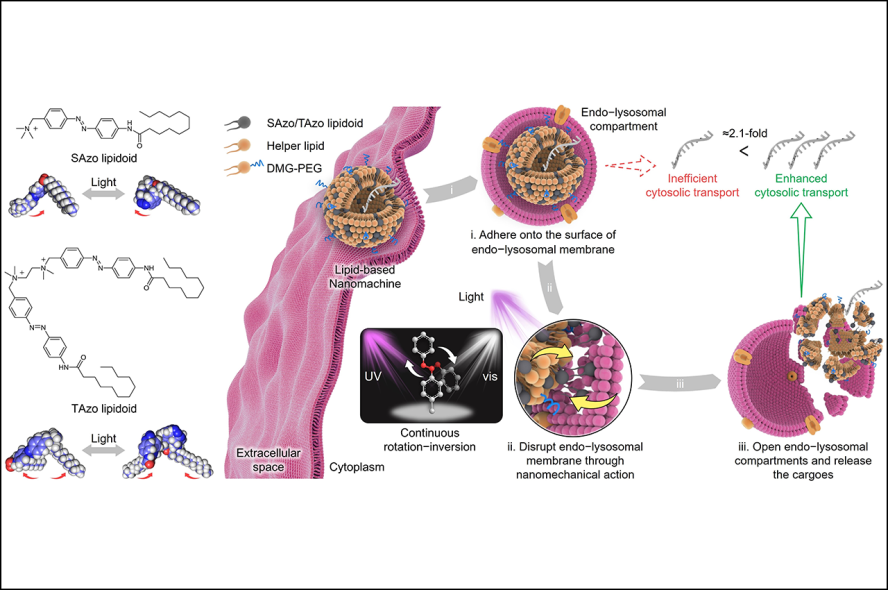Nanomachines to deliver biological substances

In Professor Qiaobing Xu’s biomedical engineering lab at Tufts University, Xu and fellow researchers study nanomedicine/gene and nucleic acid therapy. The group recently published a paper in the journal Nature Communications on the creation of artificial nanoscale molecular machines (nanomachines) that deliver biological substances into the interior of cells. When delivered through natural methods, these biological substances usually get entrapped in endo−lysosomal compartments, which results in them not doing their job properly. The Xu Lab team was inspired by the molecular machines in living organisms that achieve substance transportation through rotational and translational movements and aspired to mimic these movements in nanomachines. The journal's editors selected the paper as a highlight for a “Biotechnology and methods” feature page.
Led by first author Yu Zhao, postdoctoral scholar in the Xu Lab, the researchers achieved this goal by building the machines using special molecules called Azo-based lipidoids which can perform mechanical movements by consuming photons. When exposed to ultraviolet (UV) and visible light (Vis), Azo-based lipidoids undergo reversible changes in their shapes, and simultaneous UV and Vis irradiation enables them to produce continuous rotation−inversion and stretch−shrink movements. These movements help open up the endo−lysosomal compartments inside the cell, allowing the biological substances to move into the right place.
Compared to traditional methods, this innovation improved the efficiency of getting these substances into the cell by about 2.1 times. The other benefits of nanomachines include working with a versatile range of biological substances and easy operation, as light irradiation is one of the most convenient energy inputs. The use of these nanomachines could revolutionize nanomedicine, gene therapy, and vaccine development, bringing the drug delivery field to a new level.
With Zhao as first author and Xu as corresponding author, co-authors also included postdoctoral scholars Zhongfeng Ye, Donghui Song, and Shuliang Gao, and biomedical engineering PhD students Douglas Wich and Jennifer Khillarah.
Read the full paper, “Nanomechanical Action Opens Endo−Lysomal Compartments,” in Nature Communications. Learn more about Professor Qiaobing Xu and about the Xu Lab at Tufts University.
Department:
Biomedical Engineering